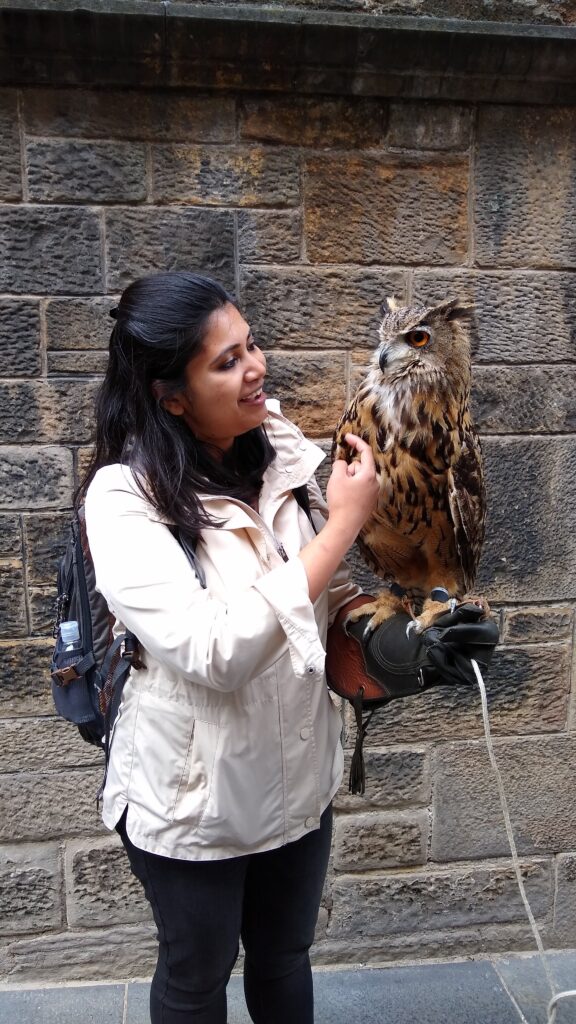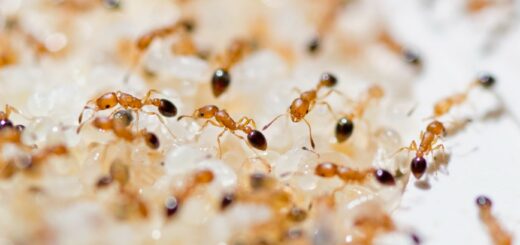Large and complex societies of fire ants contain more viruses

In the recent article “Larger, more connected societies of ants have a higher prevalence of viruses” published by Anindita Brahma, Raphael Gray Leon, Gabriel Luis Hernandez, and Yannick Wurm in Molecular Ecology, the authors investigate the virus load and diversity in the red fire ant Solenopsis invicta. Solenopsis invicta has two distinct social forms, smaller, aggressive single-queened colonies and larger, peaceful multiple-queened colonies. The authors compared viruses between those forms using metagenomics and found that multiple-queen colonies have 8.3-times higher viral load and 1.5-times higher viral diversity than queens from single-queen colonies. Here, first author Anindita Brahma highlights the main points.
An interview compiled by Alice Laciny, Patrick Krapf, Felix Oberhauser

MNB: Could you tell us a bit about yourself?
AB: I am a postdoc in the laboratory of social evolution and behavior at the Rockefeller University in New York City. I started this position a few months back. Before this, I was a Marie-Curie postdoc at the Wurm lab at the Queen Mary University of London, and that’s where we carried out the work on viral prevalence in red fire ant colonies.
MNB: Could you briefly outline the research you recently published in layman’s terms?
AB: The main question we set out to answer was whether the social lives of ants have any effect of the viral load they harbor. Ants display a wide variety of complexity when it comes to their nest organization. One of the broad categorizations for this is whether nests have only one queen or multiple queens. Nests with one queen are generally small and less complex while nests with multiple queens tend to be large and more complex with thousands of ants. Moreover, ants belonging to these two types of nests also differ in terms of behavior. And while some species of ants only exhibit one of the two types of nests, some species exhibit both, thus giving us an opportunity to compare the viral load in the same species with two different levels of group size and complexity.
We used the red fire ant, Solenopsis invicta, for this study. Rather than focusing on one or a few viruses, we decided to use a metagenomic approach to estimate all the different types of viruses present in queens belonging to one of the two types of nests, i.e. nests with either one queen or multiple queens. Our results showed that fire ant queens that came from multiple queen nests carried almost an 8-times greater viral load and a 1.5-times greater viral diversity compared to queens that came from nests with only one queen. We think that such a difference in viral load can be explained by the ecological and behavioral differences exhibited by these two types of nests.

MNB: What is the take-home message of your work?
AB: The larger nests of fire ants, which also have a more complex nest organization, carry more viruses than the smaller and less complex nests with only one queen. And this might be indicative that these large and more invasive fire ant nests can also carry and potentially transmit viruses that have harmful effects on other ecologically important species such as honeybees, which carries great economic importance as well.
MNB: What was your motivation for this study?
AB: We carried out this study at a time when the whole world came to a halt owing to a pandemic caused by a virus. All of us got a first-hand experience of what viruses can do to human society during this unprecedented time. This led us to think about how viruses affect insect societies, particularly ant societies, and whether ants that are invasive can have the potential of carrying novel viruses that can harm other species. Hence, we decided to take a look into the nests of the red fire ant. This is a notoriously invasive species in the southern parts of the United States and posits major ecological and economic threats.
MNB: What was the biggest obstacle you had to overcome in this project?
AB: One of the obstacles was to get enough high-quality data for both types of nests (with one queen or multiple queens) to be able to conduct a balanced study. It was a time when most parts of the world were under lockdown, so traveling for sample collections was not possible. Hence, we had to use published sequence data from different studies. We knew that this is a big source of noise in the dataset and we spent months to come up with stringent analyses to be able to get robust results.
MNB: Do you have any tips for others who are interested in doing related research?
AB: With sequencing techniques becoming cheaper and bioinformatic tools providing powerful ways of analyzing the sequence data, this is indeed a very attractive area of research for investigating the mechanisms of disease transmission in animal societies. However, designing such experiments also requires knowledge of ecology and behavior of the species being investigated. Hence, I think, a good experimental design that is an amalgamation of both these approaches, is key.
MNB: Where do you see the future for this particular field of ant research?
AB: So many researchers are doing wonderful work on pathogen transmission and social immunity in different ant species. This area of research has an excellent opportunity of establishing interdisciplinary collaborations involving field experiments, genomic approaches, theoretical modeling, machine learning, so on and so forth. The possibilities are plentiful and exciting, and I think that many more researchers will take an interest in this area in the near future to understand the interplay between sociality and disease transmission.





Recent Comments